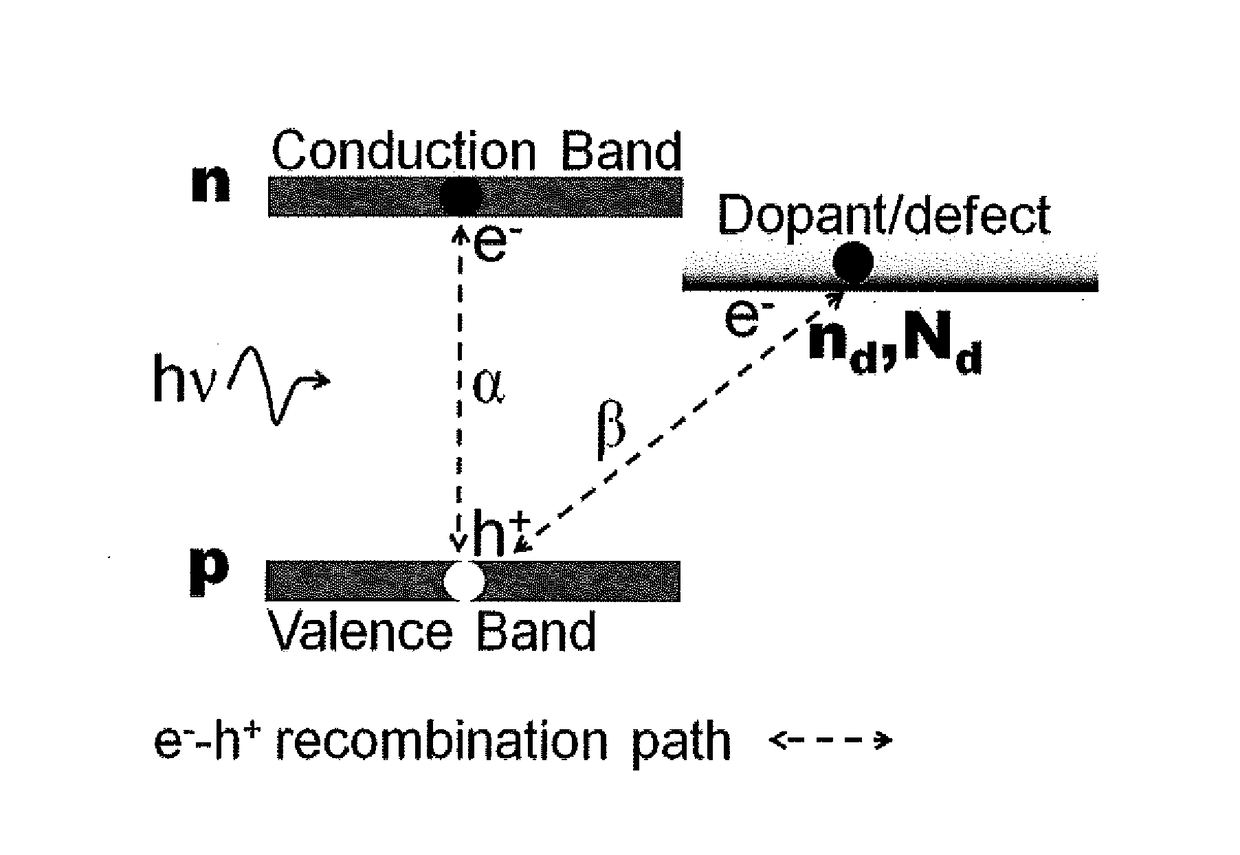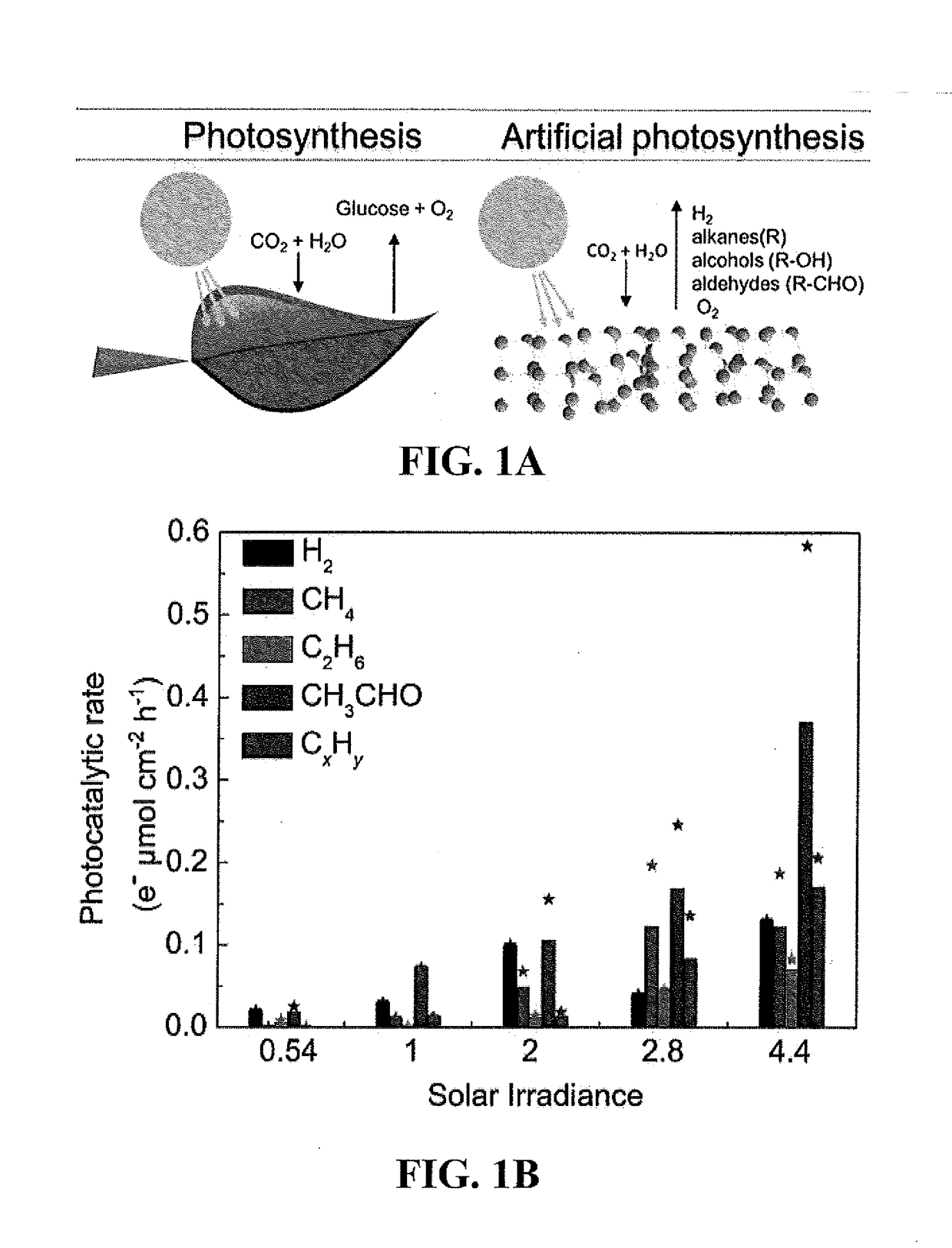Nanostructured photocatalysts and doped wide-bandgap semiconductors
a photocatalyst and nanostructure technology, applied in the field of nanostructured photocatalysts and semiconductors, can solve the problems of preventing rational design of new photocatalysts with higher efficiency and/or selectivity, affecting the observation of high photocatalytic activity and selectivity, and the effect of chemical modification on the electronic structure of tiosub>2 /sub>semiconductor is largely unexplored
- Summary
- Abstract
- Description
- Claims
- Application Information
AI Technical Summary
Benefits of technology
Problems solved by technology
Method used
Image
Examples
example
[0099]The electron flux of 100 ppm of CH4 produced in 30 minutes in our reactor is measured as follows:[0100]Sampling port pressure=760 Torr.[0101]Reactor volume=48.2 mL.[0102]Reactor Temperature=25° C., the change in reactor temperature was negligible, even under high sun illumination.
[0103]First we determine the number of nanomols produced (S stands for sample and R for reactor):
n=PSVRRTR=100ppm×(1 / 106)×760(torr)×(1(atm) / 760(torr)×0.048(L)0.08206atmL / molK×298K×(109nanomol)1mol=1.971nanomolofCH4e-flux=1.971×(8electron / 1nanomolCH4)×(1µmol / 10nanomol)×(1 / 30min)×(60min / 1h)×(1 / 0.78cm2)=4.043e-µmolcm-2h-1
[0104]Quantum Yield
[0105]The quantum yield is determined by dividing the total sum of electron used to produce hydrogen and hydrocarbons, by the photon irradiation. The photon irradiation threshold is defined by the semiconductor energy bandgap. Since higher energy electrons, or “hot-electrons” form different (higher energy or molecules with higher reduction potential) products or solar ...
PUM
| Property | Measurement | Unit |
|---|---|---|
| external quantum yield | aaaaa | aaaaa |
| bandgap | aaaaa | aaaaa |
| yield | aaaaa | aaaaa |
Abstract
Description
Claims
Application Information
 Login to View More
Login to View More - R&D
- Intellectual Property
- Life Sciences
- Materials
- Tech Scout
- Unparalleled Data Quality
- Higher Quality Content
- 60% Fewer Hallucinations
Browse by: Latest US Patents, China's latest patents, Technical Efficacy Thesaurus, Application Domain, Technology Topic, Popular Technical Reports.
© 2025 PatSnap. All rights reserved.Legal|Privacy policy|Modern Slavery Act Transparency Statement|Sitemap|About US| Contact US: help@patsnap.com



